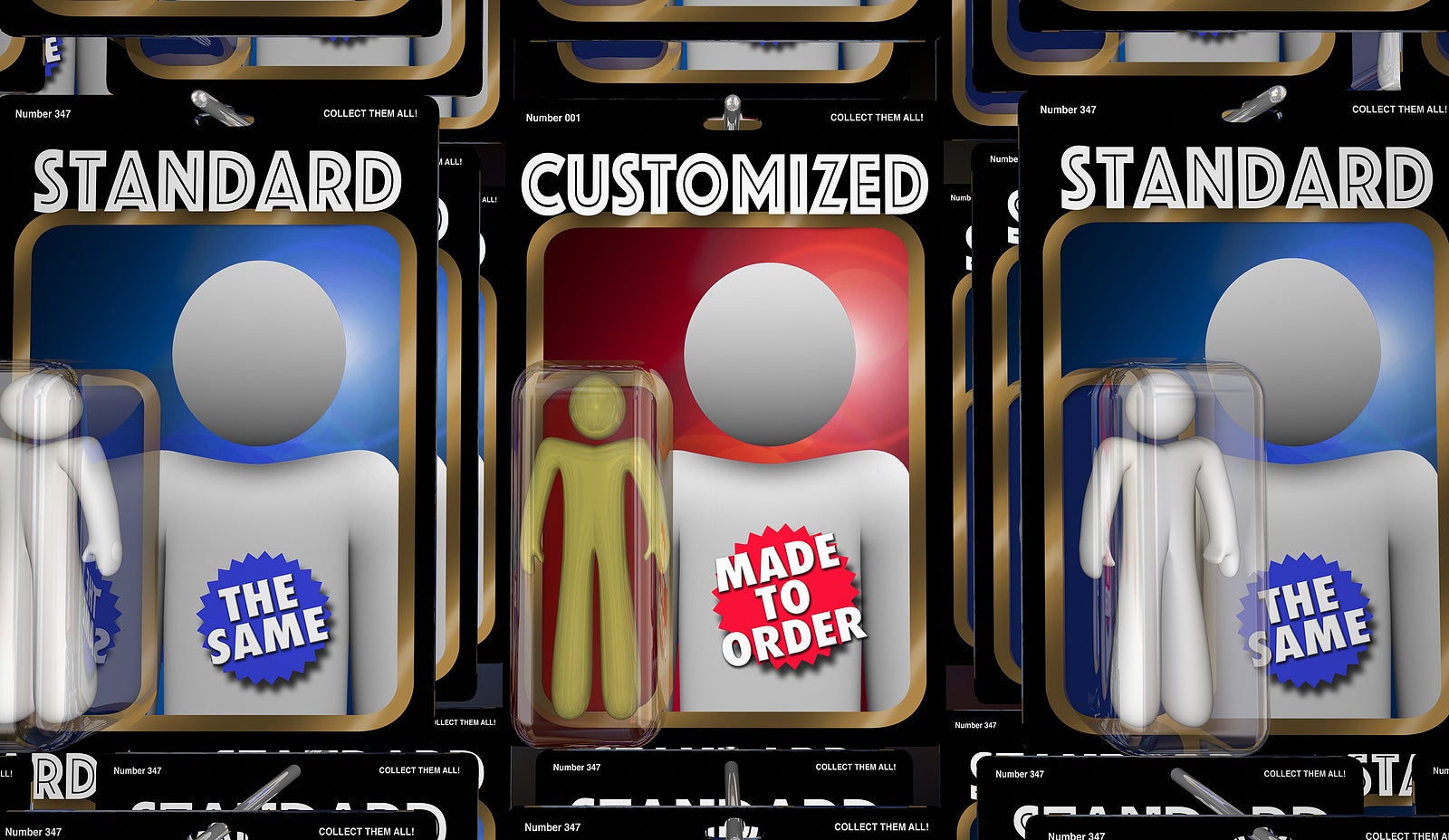
From 2015 to 2018, interest in buying customized products grew 2.4x. Where customization was once a luxury reserved for the wealthiest customers, it is now a necessity in competitive marketplaces. As the digital revolution brought more and more tech into the hands of common individuals, modern consumers have developed increasingly diverse needs. One size fits all is no longer an acceptable approach to business.
Customized Needs Meet Individualization
There are 4 potential approaches to customization. Adaptive means a standardized product is designed to accommodate many uses. For example, Philips light bulbs are standardized in function and appearance, but customers can adjust color, brightness, how the lights are controlled, and program schedules and commands. The next level up is transparent, in which a manufacturer adjusts their product based on consumer data.
Function of Beauty uniquely formulates their hair and skin products for each customer, but packaging remains the same. Beyond that is cosmetic, in which customer choices are restricted to the final stages of manufacturing. This is how Nike handles their Nike By You program; customers choose a standard style and size, but add their own combination of colors and finishes.
Finally, the highest level of customization is collaborative. The customer’s preferences are involved in several steps to create a truly unique product. An example of this process is Sheffer Cylinder Configurator, where customers design their own cylinder with the help of an engineer.
Product configurators allow businesses to scale customization beyond the occasional special order. They combine the low cost, low effort standard product with the benefits customers get from a customized product, all while making their services available to large and small businesses alike. Product configurators are powered by rules; what can customers change without removing the product’s function?
Configurable parameters of this type include product size, energy source, materials and finishes, and RPM. As Vicki Holt, President and CEO of Protolabs, acknowledges, “it is more important than ever for manufacturers to adopt the digital models that enable product makers to quickly and affordably bring a diverse selection of product options to market to meet consumer demand.”
Product configurators are best for mechanical parts, electrical components, and architectural products. Within those sectors, choosing the best configurator for each business requires one to look at real time pricing, customer experience, and early available data. One example is Cadenas eCatalogsolutions, among others. What’s important is making sure consumers and companies get the best deal.













